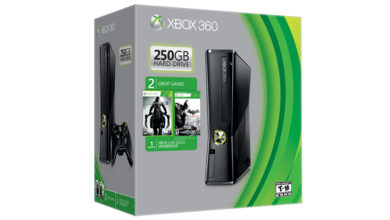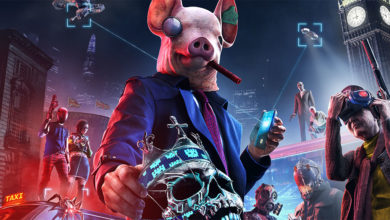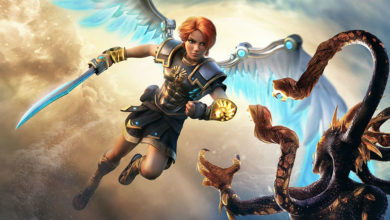![]() Where do we begin? Do I put this one up against the previous Splinter Cell games, or do I take it as a standalone game with barely a passing resemblance to the series whose name it bears? It’s a tough question, but let’s face it, the Splinter Cell series has a pedigree unlike most games out there. So let’s get both out of the way right at the start. As a Splinter Cell sequel, the game is an abject failure. Forget about the name, it’s not even the same genre anymore. As a standalone game, it does a little better, but in trying to please both the core Splinter Cell fans and trying to bring in the Call of Duty fans, it ends up doing neither very well. Jack of all trades and master of none – that phrase sums up Splinter Cell: Conviction better than anything else I could write.
Where do we begin? Do I put this one up against the previous Splinter Cell games, or do I take it as a standalone game with barely a passing resemblance to the series whose name it bears? It’s a tough question, but let’s face it, the Splinter Cell series has a pedigree unlike most games out there. So let’s get both out of the way right at the start. As a Splinter Cell sequel, the game is an abject failure. Forget about the name, it’s not even the same genre anymore. As a standalone game, it does a little better, but in trying to please both the core Splinter Cell fans and trying to bring in the Call of Duty fans, it ends up doing neither very well. Jack of all trades and master of none – that phrase sums up Splinter Cell: Conviction better than anything else I could write.
[singlepic id=1981 w=450 float=center]
The problem isn’t that the game tries to be a stealthy third-person shooter (an oxymoron if there ever was one), but that it ends up with flaws from both genres and strengths of neither. But it’s not all a waste; there are things that have improved considerably for the series, not the least of which is storytelling. A genuine effort has been made to put a human face to Sam Fisher. It’s not exactly at the Bioware level, and it does feel like the writers overdosed on 24 at times, but compared to the generic tripe we usually get in Tom Clancy games, the story in this one is actually enjoyable. It certainly kept me interested enough to finish it when the gameplay had turned me off.
So changes made to the storytelling work, but changes made to the gameplay are more of a mixed bag. The first thing that strikes you is how much the game now relies on cover instead of darkness to stay hidden from enemies. The whole mechanic is a mixture of Rainbow Six: Vegas cover, and Gears of War-style movement. To the games credit, the whole thing is implemented very solidly. Moving from cover to cover feels slick and after getting used to the controls, you can slide in and out almost instinctively.
[singlepic id=1980 w=450 float=center]
The AI is barely competent most of the time. Then you throw in the ‘last known position’ mechanism and they switch from stupid mode to ‘I will watch this blank spot till you kill me’ mode. Basically, the last known position mode works like this – if an enemy spots you, a ghost of your last known position lights up on the screen. And then all the enemies converge on that position to stare at that ghost until you decide to put them out of their misery. In fact, it skews the odds in your favour so much that in some tough scenarios, being seen and having a ghost on screen is better than being hidden. Another questionable thing in the AI this time is the ability to hear. It’s not entirely missing, but 9 times out of 10, you can simply run up full speed behind the enemies, and take them out without worrying about them hearing you.
To totally mess up any sense of balance, the game hands you a silenced pistol that never runs out of ammo in the first mission. After three or four missions, you will start carrying around 18 grenades in your inventory at any given time. In fact, in the last few missions, you carry around 20 grenades with you. And if you somehow happen to run out of them, there are ammo stashes placed around levels, where you can pick up more. Any firefight that takes places close to an ammo stash is pitifully short because you can just spam grenades till everyone is dead and then refill from the ammo stash.
[singlepic id=1979 w=450 float=center]
In addition to all of that, you have the ‘mark and execute’ ability. If you take out an enemy with a melee kill, you can mark 2-3 targets and Sam will automatically take them all out with a headshot without you even having to aim the gun. About halfway through the game, you get sonar goggles that let you see and mark enemies through walls. With all of that skewing the odds in your favour, you would think that the whole game would end up being a cakewalk. And perhaps Ubisoft realised that too. So they started coming up with ways to increase the difficulty; most of them blatantly cheap and unfair. The biggest one is spamming you with enemies, and the game ambushes you at certain points in every other level. This becomes almost a norm in the last level, where every other room is an ambush waiting to happen.
The developers must also have known that darkness will make things even easier for you, so they put too many lights in almost every area to shoot out. It is a bit disconcerting (especially as a long time fan of the series) to walk into a small area and find it lit up with 15-20 small lights. Do you really have the patience to go around shooting them undetected just to make a path for yourself? It’s far less tedious to just kill every one. And in the most blatantly cheap move to up the difficulty, some of the enemies later on in the game take multiple headshots to kill, while you can barely take a few rounds before you go down.
[singlepic id=1982 w=450 float=center]
But even with the game taking potshots at you (and your patience), you will still easily zip through the single player campaign in under six hours. There are few memorable moments in the campaign, so even though you can finish it in quick time, you’ll still greet the ending with a sigh or relief, so you can move over to the multi-player side of things.
Next page: Multi-player & IVG Verdict



